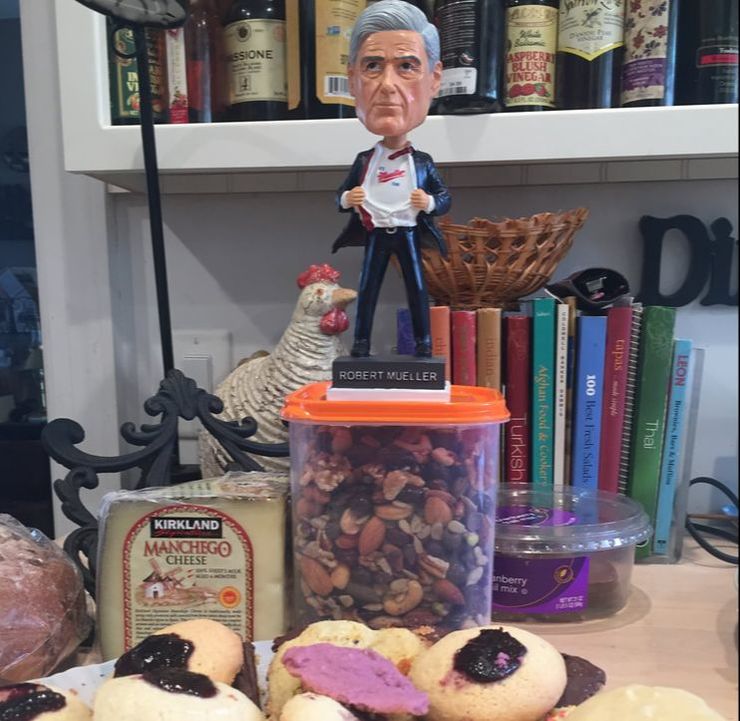|
In the final hours of an ugly year, I stuck with the tried and true.
Our local classical station, WQXR-FM, was playing the top 100, as chosen by listeners. It was reassuring to hear music that stirred people and soothed people in other dark times, with other crackpots and despots flailing around, and the music survived. Then again, we have seen votes go wacko in a democracy. When the Gilbert and Sullivan spectacle, “Pirates of Penzance,” popped up in 10th place, my reaction was, “Wait, WTF, how did that get in there?” The WQXR–FM web site had the same reaction: Was it was the work of Gilbert and Sullivan superfan sleeper agents? Or is everyone just really excited about the end-of-year New York Gilbert and Sullivan Players production of Pirates at the Kaye Playhouse. (It turns out that it very well might be both, as the New York Gilbert and Sullivan Players staged a campaign to launch the opera into the countdown — and it clearly worked. Trolls. Bots. Hacking. Malware. Whatever they are. Sounds like a job for Super-Mueller, but Our Civic Protector is said to be otherwise occupied with his investigation into more serious shenanigans. Other than the jolt of Gilbert and Sullivan coming in 10th in any classical music ranking, it was a joy to hear oldies soothe the dark days and nights as 2018 slunk off into history. Beethoven had four symphonies in the top 10, including his Ninth, with the rousing “Ode to Joy,” now becoming a staple ‘round midnight on Dec. 31. Some of the most familiar music can be considered chestnuts, but I was happy to hear them, knowing that new and adventuresome and inventive music will be presented by John Schaefer on “New Sounds” and by Terrance McKnight on his weeknight show. Plus, as 2018 ebbed, I heard some of my favorites, Dvorak and Copland and Vaughn Williams and Smetana and Bartok and Barber and Ravel and Satie and Lenny Himself, conducting his “West Side Story: Symphonic Dances,” which always makes me feel 16 again, walking the streets of my home town, feeling, “could be, who knows?” In the symphonic version, I could hear the lyrics of Stephen Sondheim: Could it be? Yes, it could Something's coming, something good If I can wait Something's coming, I don't know what it is But it is gonna be great. Happy New Year.
Josh Rubin
1/2/2019 05:08:35 pm
Happy New year, George, and to all the regulars here!
George Vecsey
1/3/2019 10:53:40 am
Josh, thanks. I did not know his daughter is singing at the Rambles.
Mendel
1/4/2019 04:43:49 am
George,
George Vecsey
1/4/2019 11:46:42 am
Mendel, John Moreland, never heard of him, very nice. thoughtful, understates, but emotional nonetheless.
Mendel
1/6/2019 02:29:05 am
Springsteen with better voices, George? Try this on for size:
George Vecsey
1/6/2019 12:19:18 pm
Mendel, will do. I hope I did not come off too strong in that post....but I figured one Queens guy can tolerate brash opinions from another Queens guy. Be well, GV
Mendel
1/7/2019 03:33:00 am
Brash opinions? Fuhgettaboutit!
Josh Rubin
1/3/2019 11:33:54 am
George, we never made it to one of the actual rambles with Levon, either. Wish we had. It does not seem as though the rambles are a regular thing. Rather, the Helm studio hosts a variety of concerts more or less in that spirit with various performers. But the Midnight Ramble Band still functions as a continuation of both the Band's and Helms's spirit, performing at times at the studio and elsewhere. On NYE they played a mix of Band covers, Helm post-Band originals (have you heard Levon's album "Dirt Farmer"?), and a few other covers including Atlantic City, Mystery Train, Randy Newman's "Kingfish" and a rollicking New Orleans style romp. They sounded great. Amy Helm performs with them and seems to have a hand in various projects keeping Levon's legacy going. It was such a warm and convivial scene and the band sounded really good.
bruce
1/3/2019 05:43:03 pm
george, Comments are closed.
|
Categories
All
|










